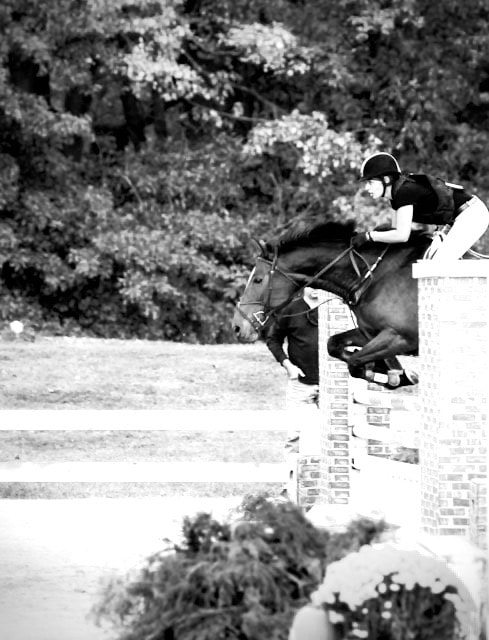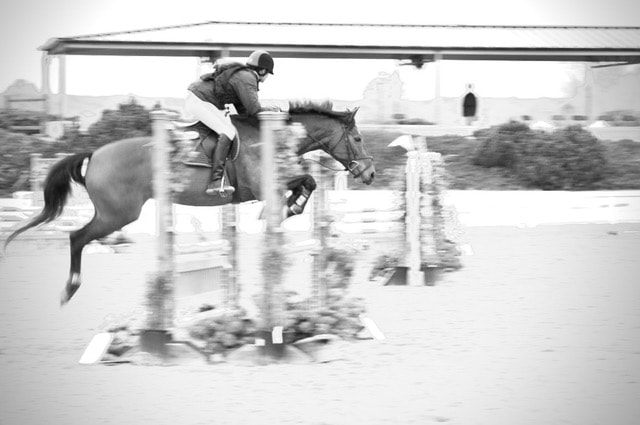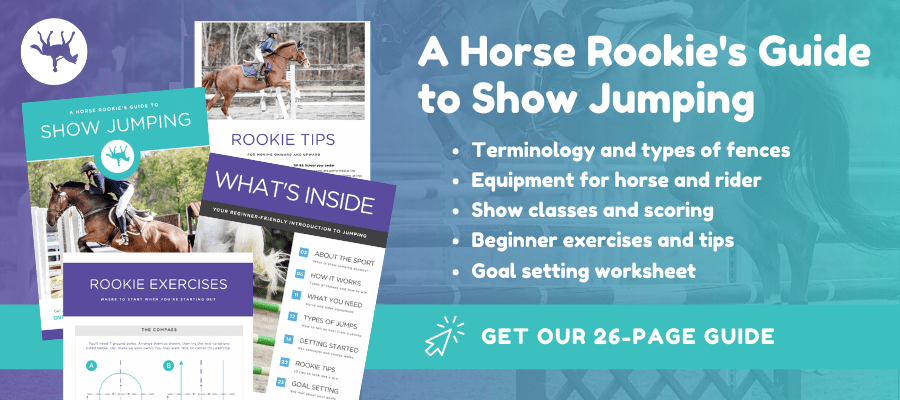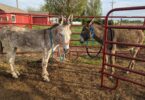It’s normal to feel nervous
I’ve been jumping my horse, Perla, for seven years, competing confidently in the jumper ring at 3’6” – 3’9″ – our comfort zone. Yet, when my riding instructor decided it was time to try 4’ and raised the jump one hole — just three inches — everything changed.
When I looked at the 4’ jump, before even taking the reins in my hands, I started anticipating a refusal.
Perla, of course, sensed my apprehension. When we picked up the canter and headed for the fence, each stride felt a lot less like jumping and a lot more like taking a leap of faith.
I’m Not Usually Afraid
As far as I can remember, I’d never truly felt fearful on a horse before that day and that moment. I was always a .
When I was a little kid, I couldn’t wait to jump — even when my trainer said I wasn’t yet ready. When I was jumping 2’, I wanted to jump 3’, and when I was jumping 3’, I wanted to jump 3’6.” I hadn’t blinked an eye when the jumps were raised to 3’9.”
But raising the bar (literally) to the 4’ mark felt different. I was honestly scared and lost my confidence.
How could I rebuild Perla’s and my confidence?
Check out our favorite 33 tips for nervous horse riders.

Step Back Before Stepping Up
Thankfully, I was honest with my trainer about how I felt — and she took it seriously.
The first thing we did was take the jumps down — and not just a few notches.
We removed jumps from the equation altogether and went back to ground work.
She taught me how to catch a horse without treats, how to hand walk with spontaneous halts, how to properly lunge my horse, and how to stretch Perla afterward.
These confidence building lessons revealed just how much I’d taken for granted the horse at the end of my lead rope.
Horses are magnificent creatures. They have unique therapeutic benefits and have been a trusted mode of transportation for centuries. They have fought and died with us in battle. They have helped us work our farms, as well as build the towns in which we live.
Learn how to teach your horse to come when called using clicker training.
Getting Back in the Saddle
Groundwork started to reconnect me with my horse and take a long hard look at our relationship. I even gave her a new nickname, Little Miss Thang, because I finally realized how much she’d been walking all over me.
When it was time to move up from the ground, Little Miss Thang and I made it all the way to… the mounting block.
We weren’t very impressive there either. I looked more like a jockey after the “Riders up” call, hopping aboard a horse who was already in motion.
We spent days retraining our mounting block manners. I stood there and parked Little Miss Thang as if I were about to hop on before finally “graduating” to putting the stirrups down.
If she moved, I got off the mounting block, rolled the stirrup back up, and started again. Then I “graduated” to putting my foot in the stirrup. Again, if she moved, the whole process would start from the beginning.
Now that I could properly get on and off my horse, it was time to understand what was happening under saddle.
For months, I rode around the arena at the walk and trot until we learned to work together as true partners. Only then was it time to return to jumping. And guess what? I felt way more confidence approaching the fence.
Ever wonder if an air vest can help alleviate your nerves?

You’re Not Alone
Everyone will face fear in the course of their riding career. For some, like me, it might be increasing jump height. For others, it could be fear of competition or particularly spooky stretches of trail.
My advice? Get off your horse and spend some time with them on the ground. It’s never too late to build a stronger foundation and mindset.
P.S. Enjoy this article? Trot on over to:
- 10 Best Stirrups for Jumping Clear (And Staying Safe)
- What is a Neck Strap for Horses & Why Use One?
- 3 Easy Tips: How to Approach a Horse Jump for Beginners
- Horse Jumping Tips Beginners Can Put Into Practice Today
- How exactly do you “fold” when jumping a horse?
- What is the correct jumping position for horse riders?
- Compositi Stirrups Review: I’ve Never Jumped Better
- 100+ Things to Pack for a Jumping Horse Show (Checklist)








